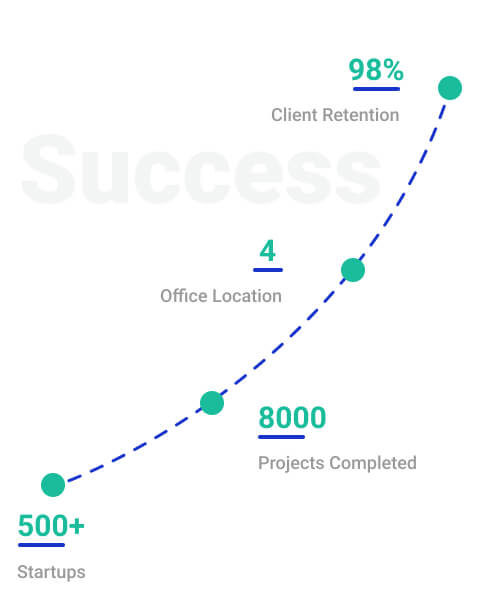The way a company funds its operations and assets is termed its capital structure, which involves a blend of debt and equity. It's like a financial methodology that companies create using different ingredients such as short-term and long-term debt, common and preferred stock. This mixture forms the backbone of a company's financial structure. Funding and capital structure by VCFOs helps companies in putting together this methodology in a quick and efficient manner using our VCFO expertise.
In determining the cost of capital, a significant step involves assessing the individual costs of each component in the capital structure and weighing them against the overall sum. This complete approach aids in understanding the financial health of a company and its ability to manage its financial obligations.
Significance of Funding and Capital Structure by VCFO
Given below is the significance of funding and capital structure by VCFO:
Enhancing Firm Value using funding and capital structure by VCFOs
Capital structure plays a significant role in augmenting the value of a company. A well-structured capital composition contributes to elevating the market value of shares and securities, thereby boosting the overall value of the organisation.
Optimal Resource Utilisation
An organised capital structure empowers efficient utilisation of available funds. Meticulous planning ensures fulfilment of financial needs while sourcing funds from diverse channels for optimal deployment. Such a strategic capital structure safeguards against both over-capitalisation and under-capitalisation pitfalls.
Maximising Returns
A strong capital structure empowers management to increase company profits, resulting in enhanced returns for equity investors. Achieving this entails using the equity-debt balance, favouring debt capital due to its cost-effectiveness. When returns on employed capital surpass the fixed interest paid to debt holders, the company capitalises on equity trading.
Cost Efficiency using funding and capital structure by VCFOs
Effective funding and capital structure heightens shareholders' wealth by minimising the average cost of capital. Integrating long-term debt capital is key, given the lower cost compared to equity or preference share capital. Deductible interest on debt strengthens cost-efficiency.
Solvency and Liquidity
A prudent capital structure avoids excessive debt accumulation, safeguarding solvency even during lean earnings periods when obligatory interest payment approaches.
Preserving Control via funding and capital structure by VCFOs
An optimal capital structure ensures equity shareholders' control remains intact and unimpaired, preventing dilution.
Risk Mitigation
While augmenting debt in the capital structure escalates financial risk, a well-structured capital framework counterbalances this through a wise blend of equity and debt.
Adaptability
A well-conceived capital structure accommodates capital expansion or contraction to align with evolving circumstances, enabling swift adjustments.
What are the Factors Influencing Funding and Capital Structure by VCFO?
Given below are the factors influencing funding and capital structure by VCFO:
Cash Insolvency Risk
Cash insolvency risk arises from failing to meet fixed interest payments on liabilities. Higher debt proportions compel firms to pay higher interest rates regardless of fund availability, potentially leading to liquidation.
Earnings Variability Risk
Greater debt obligations heighten the risk of earnings fluctuations affecting equity investors. A balanced capital structure mitigates this by aligning returns on investment with interest rates.
Cost of Capital
Funding and capital structure decisions depend on the cost of capital from diverse funding sources. A company must generate adequate revenue to meet its cost of capital and fund future growth.
Control Considerations
Funding and capital structure choices are influenced by control retention. Equity holders may opt for debt financing to maintain control, given debt lacks voting rights.
Trading on Equity
Utilising debt capital alongside equity to boost returns is known as trading on equity. Debt interest deduction reduces its cost, potentially increasing equity returns.
Government Policies
Capital structure is shaped by governmental policies, SEBI regulations and lending norms from financial institutions. Monetary and fiscal policies also impact decisions.
Company Size
Small companies rely on equity due to less favourable loan terms. Large companies diversify securities issuance despite lower interest rates.
Investor Preferences
Investor financial conditions and preferences drive funding and capital structure choices. Risk-averse investors lean towards debt, while growth-seeking investors opt for equity.
Flexibility
A suitable capital structure ensures adaptable funding, facilitating growth with minimal cost and risk impact.
Finance Tenure
Financing purpose and tenure dictate capital structure. Long-term needs favour debentures, while permanent needs align with equity.
Business Nature
Stable income firms favour debentures or preference shares, while uncertain income businesses rely on retained earnings.
Legal Mandates
Capital structure design adheres to legal provisions and regulations.
Financing Purpose
Capital structure aligns with financing intent—manufacturing needs favour long-term sources, while welfare initiatives opt for internal funds.
Corporate Taxation
Debt financing is tax-efficient due to interest deduction, reducing tax liabilities. High corporate tax rates favour debt issuance.
Cash Flows
Funding and capital structure considers business ability to generate cash flows, impact on solvency and meeting obligations.
Future Provisions
Future capital requirements shape funding and capital structure planning.
Why you Should Hire Startupfino for Services on Funding and Capital Structure by VCFOs?
Funding and Capital Structure by VCFOassist businesses in improving their financial performance, meeting their goals and focusing on their core competencies. StartupFino’s expert VCFO services on Funding and Capital Structurework hand in hand with your professional team to refine your financial plan in order to maximise shareholder value while meeting your growth and profit goals.
Our services include the below mentioned:
- Customised funding strategies to optimise capital structure, ensuring growth while managing financial risks.
- Debt and Equity Analysis to align capital structure with business goals.
- Investor Relations Management facilitating successful funding rounds and sustainable capital inflow.































































